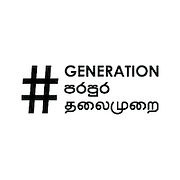
Play
Strategy
ExtremeLives is a demonstration of one of UNDP’s core approaches to preventing violent extremism: namely through the lens of development. The ExtremeLives team came into Season 4 with a renewed sense of vision for the upcoming series and a series of goals:
-
Further hone content for a youth target audience in Asia, including updating the visual identity for the series
-
Improve localisation through nurturing CSO, charity, or youth-group partnerships
-
Investigate methods to ensure the impact of future campaigns and videos can be measured.
One of the biggest challenges was ensuring that the videos were relevant to the context of the implementing countries for the season: Sri Lanka and the Maldives.

The Maldives
Learn more
The Maldives is made up of 1,200 islands, but the population is concentrated on only a few, with most Maldivians living in the capital, Male. Overcrowding and housing instability force youth to spend much of their time on the streets where they can fall prey to drugs and recruitment into gangs. The Maldives has an abnormally high incarceration rate, and much of this is due to disproportionately high rates of drug usage and gang activity. Almost all of those who have gone to Syria and Iraq are believed to have had encounters with the justice sector or prison system, and to have some connection to drugs.
Content needed to be tailored to different contexts

Sri Lanka
Learn more
Between a decades-long civil war to the Easter Attacks in 2019, Sri Lanka has been the site of much violence and deep-seated religious and ethnic cleavages. In the aftermath of violence, social media platforms, particularly Facebook, have been criticized for not monitoring hate speech more closely to ensure that the platform does not facilitate or foment violence and extremism. There are therefore deep-seated misconceptions, stereotypes, prejudices, and mistrust that remain in this diverse society as a result of the civil war and ongoing communal violence.
Different contexts means different priorities
Through consultations with behaviour science experts, researchers and academics, civil society organisations and UNDP Country Office experts, themes were identified for the upcoming season: drug use, incarceration, gender inequality, conflict-related trauma and resentment, digital polarisation, and cross-cultural relationships. Protagonists for the videos were suggested by a network of local organisations who also helped shape the narrative of each video:

Play
Videos
Each video narrative arc told a story of transformation: we provided space for the protagonists to outline the personal and social challenges they were facing, before showing how their participation in activities such as volunteering, sports or the arts supported them. The videos also focused on creating an emotional connection to the protagonist, showing how turning for support to friends, relatives, and mentors was a positive step in the right direction.
This then promoted two key behaviours from our audience that also provide entry points for intervention: to consider extra-curricular activities that provide a sense of purpose, and to consider speaking more openly about life challenges with someone they trust.



Stories that promoted a sense of connection and belonging
All protagonists were under the age of 35 for a youth-focused audience
Imagery to promote reflection and personal stories
Watch the videos here.
ExtremeLives Season 4
ExtremeLives Season 4


THE ADVOCATE | ExtremeLives

THE REFORMER | ExtremeLives

THE CHAMPION | ExtremeLives

Play
Graphics
A new logo and visual identity for the project was developed, focusing on the concept of storytelling through moments of reflection, the challenges of those affected by extremism face, and to demonstrate diversity through different identities and labels.
The concept of water, reflections, and masks was explored to develop a new logo form: an abstraction of a face and its reflection a distorted form reminiscent of wavelets in water. To contrast the logo's minimalism, neon bursts of green provide a youthful and arresting colour scheme to ensure audience attention is captured on social media.
This neon green colour was carried forward into the animations developed for the videos themselves to ensure cohesion. As a youthful series, the incorporation of animation set the tone for the story and also provided a creative outlet to visually represent important aspects of the protagonist's stories.



Target audience-appropriate style
Turbulence and indecision when it comes to identity.
TV static hinting towards the project's focus on video


Play
Quiz
The videos were watched for over 200,000 minutes in the last two months, and received overwhelmingly positive engagement with over 5,700 comments, likes, and shares. But social media metrics only go so far. It doesn’t get us to the root of understanding whether the audience’s mind has been changed.
We therefore developed a digital pre-and post-exposure survey, using gamification approaches. Gamification cuts through the noise of the attention economy. It helps ensure we keep audiences engaged.


To provide an incentive, we also promised something to our audiences: that they would learn something new about themselves, namely their locus of control, or how in control they felt about their life trajectories.
Results









.png)
